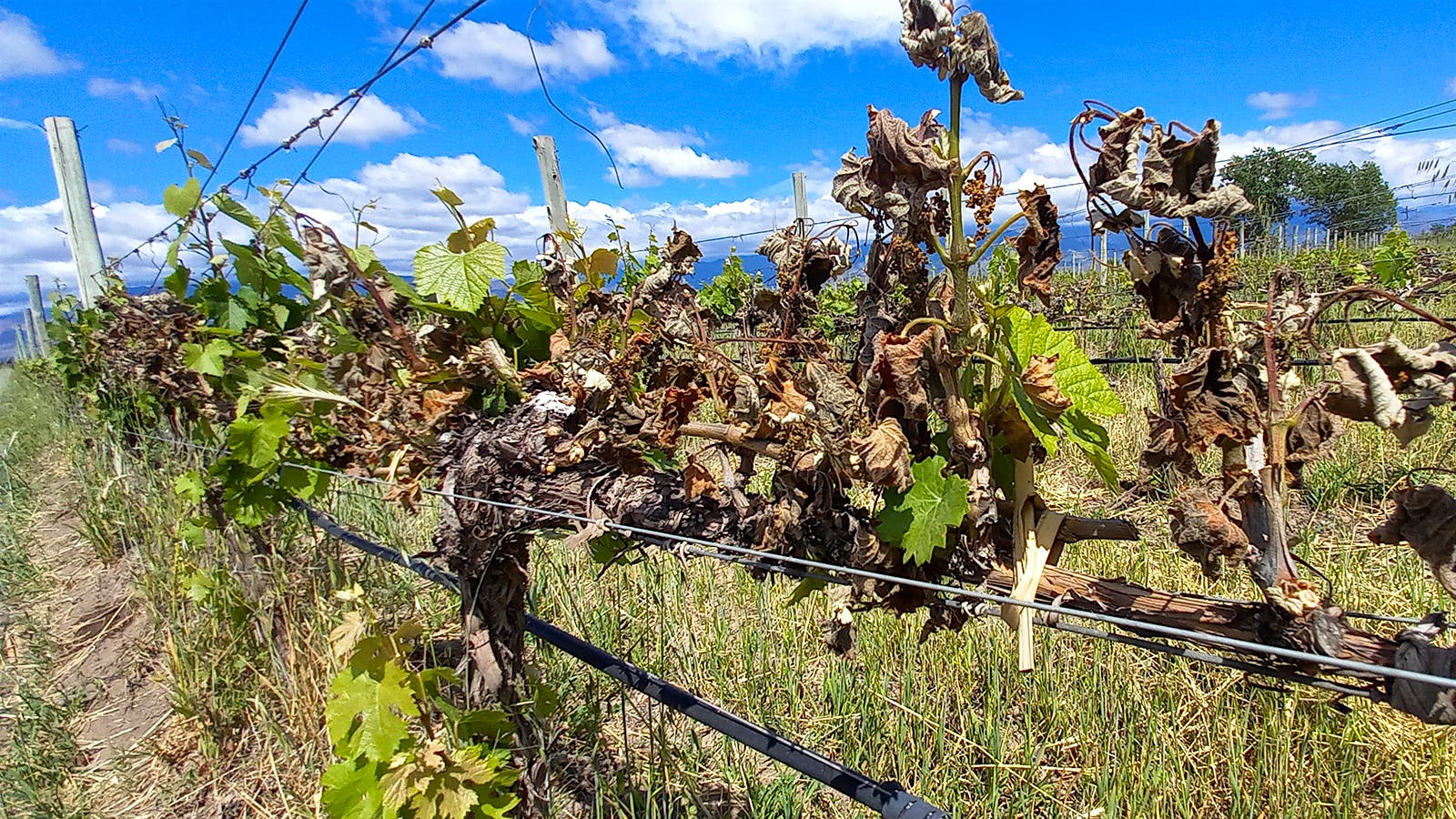Products You May Like
Several of Argentina’s leading wine regions were devastated by consecutive days of widespread freezing conditions recently, impacting tens of thousands of acres of vines throughout the country. At a time when nearly all vineyards were budding and many were beginning to flower, it was a particularly unfavorable time for a cold snap. In some areas, temperatures plummeted to the low 20s.
Magdalena Pesce, general manager at Wines of Argentina, said numerous winery representatives believe it’s still too early to have accurate data but estimates an average loss of 32 percent of yields nationwide. “We have to wait to see how the plants react,” she said.
Domaine Bousquet agronomist Franco Bastias agreed. “It’s the very beginning of the sprouting season in the vineyards, and we will have to wait several weeks for a better idea as to the loss of yields and how this will affect the industry,” he said.
Argentina’s frosts, which occurred on the mornings of Oct. 31 and Nov. 1, were eerily similar to the frost that damaged California’s Sierra Foothills, Lodi and Clarksburg regions earlier this year. Argentina experienced a very warm prelude in the days leading up to the rapid shift. Zonda winds—warm, dry gusts blowing down from the Andes—raised daytime temperatures into the low 90s, but at night the country was hit with cold winds from the south. A cold air mass further plunged temperatures by early morning on Oct. 31. The following day was comparable but with greater intensity, with cold temperatures starting earlier and reaching even deeper lows. Some areas endured prolonged freezing temperatures of up to eight hours.
Many believe this is the most damaging frost the country has seen since 1992. Bastias recalled his parents speaking of what a terrible year 1992 was for the vineyards. Several vintners reported that while late-season frosts aren’t uncommon, what was unusual this year was the duration and expanse of land that the frost touched.
Early indications show that the damage varies depending on each region. In the southern and eastern portions of the Uco Valley, areas such as Paraje Altamira, El Cepillo and Vista Flores seem to be more significantly damaged, as well as the southern winegrowing regions in Patagonia.
Bastias reported that Domaine Bousquet’s principal vineyard in Gualtallary, in the northern part of the Uco Valley, was mostly unaffected. “Gualtallary enjoys a natural slope of the terrain that helps considerably toward reducing the impact of the frost damage,” he explained. “The vineyard has an average slope of 5 percent, which facilitates the release of the freezing air to lower levels, beyond the vineyard.”
Winemaker Alejandro Vigil described similar conditions at Bodega Catena Zapata’s vineyards in Gualtallary, noting that the vineyards most affected were those in some of the low and flat regions. Catena’s vineyards in Luján de Cuyo and Maipú in Mendoza were also largely unaffected.
But Catena’s vineyards in the Uco Valley had mixed outcomes. “Our Altamira vineyard, Nicasia, which is on a slope by the river, had about a 20 percent reduction in yields. Vineyards in the low part of Altamira or El Cepillo farther south have a projected reduction in yields of up to 50 percent,” said Vigil.
Bodegas Salentein’s vineyard manager Diego Morales has seen similar impacts, saying 100 percent of the winery’s vineyards in Paraje Altamira have visible damage. Additionally, he said one vineyard in nearby La Consulta has 64 percent visible damage. “Broadly speaking, if we go higher [in elevation], the damage decreases,” Morales said. He also noted that while some areas show no visible damage, that doesn’t mean that the frost did not affect fruit set. “This should be evaluated during the end of November and first weeks of December,” he said.
Familia Zuccardi, based in Paraje Altamira, has seen less damage than other producers. But winemaker Sebastián Zuccardi noted that just as vines can show no damage but struggle with fruit set, vines that did suffer visual damage might experience a second budding and end up producing a good crop. “Visual damages don’t mean that will directly result in the reduction of harvest because many vineyards are going to budburst again,” he explained.
Bastias said it will still be several weeks before vintners have a better idea of yield loss and how the frost will affect the industry: “Vines have an impressive resilience and a huge ability to recover from these climatic episodes, so we don’t have to panic. We are sure the vines will sprout again in a few days. We need to observe and learn about those powers of resilience and how we can support them through conscientious and dedicated management.”
Stay on top of important wine stories with Wine Spectator’s free Breaking News Alerts.
